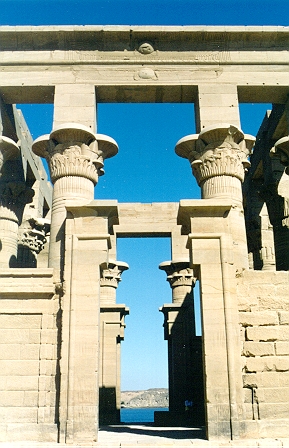 I
believe this was the most beautiful place in Egypt.
I
believe this was the most beautiful place in Egypt.
The Temple of Isis or the other temples, is no longer at the island of Philae, which was inundated by the Aswan Dams, partly from 1902, completely from the 1960s. But with the help of UNESCO all the monuments were transported to the nearby island of Aglika, 500 meters away.
Most of the original structures and organizations have been reconstructed. The weird attraction of Philae from the 1930s, of swimming around the temple ruins, looking down, through the water, at the relief's of the walls, is now gone. The move lasted from 1972 to 1980. The Philae temples have a tradition of being one of Egypt's foremost tourist attractions.
The oldest structures date back to 4th century BC, built there are elements from Ptolemaic, Roman, Christian and Muslim eras. The Temple of Isis was built in the Ptolemaic period (332-330 BC), and was the foremost sanctity of the popular cult of Isis and Osiris, a cult that was a strong contender to early Christianity. Isis was the goddess of motherhood and sexuality.
Of other temples, the temple of Augustus lies to the north and the temple of Hathor to the east of the temple of Isis.
Due to the tourist potentials, the Philae is now presented with a sound and light show, which offers presentations in 6 different languages, which should fit some traveler's taste, if not all. The show lasts 1 hour, and is a tour through the ruins.